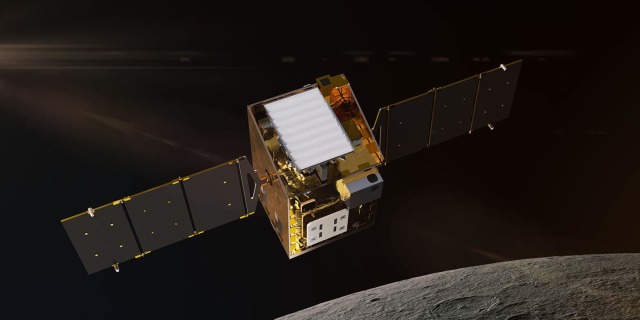The next two decades promise a real boom in flights to the Earth's natural satellite. All these missions will require a reliable infrastructure for orientation in space and on the lunar surface, as well as data transmission. Lockheed Martin is going to capitalize on such promising needs: she has registered a "daughter" who will create solutions similar to terrestrial satellite Internet and navigation.
In the entire history of space exploration, mankind has sent about 130 missions to the moon, of which 16 in 2022. There has never been such an increase in the number of flights, and it only promises to continue. By the end of 2030, a total of over fifty lunar missions are planned, a significant part of which have already received funding and are in active development (or are almost ready at all). In other words, over the coming decades, the moon will become very lively.
Every launched vehicle — whether manned or unmanned — should be able to navigate in space and communicate with the Mission Control Center. And in each case, these tasks are solved, albeit in typical ways, but in slightly different ways. In addition, ground infrastructure is expensive: even with its huge resources, NASA and its partners cannot maintain continuous communication with every functioning mission. There are only three powerful Deep Space Network communication stations, and their resources are limited.
Finally, there is the problem of communication with devices that are out of line of sight. For example, placed on the reverse side of the Moon or its poles. Of course, it is possible to send missions to companies with relay satellites and place them in high orbits or at Lagrange points, but this, again, is costly. Some private space companies have offered their assistance in launching specialized vehicles to provide communication services. These projects look promising, but critically depend on the support of other participants in the "new space race" and government players like NASA.
According to the SpaceNews portal, one of the most experienced and self—resourced representatives of the aerospace industry, Lockheed Martin, has entered the game. On Tuesday, March 28, the company announced the creation of a subsidiary of Crescent Space Services, which will launch the Parsec project. This is a satellite communication and navigation network built on small satellites. The launch of the first pair is expected in 2025, after testing and "running-in" the service on the first customers, constellation can expand.
To provide the planned services in a minimal amount, only one device is needed, but two will give more opportunities and, most importantly, reliability. Parsec users will receive tools for two-way data transmission, navigation on the Moon's surface and orbit around it, as well as a mission planning service. Technical details like network bandwidth and positioning accuracy are not disclosed yet. But Crescent Space Services has already submitted an application for approval of the service to the US Federal Communications Commission (FCC), so we will learn some details about Parsec pretty soon. As soon as the agency registers and publishes the documentation.
The main competitive advantage of Lockheed Martin in the new field is the availability of technology. The company will make Parsec grouping devices on already well-used hardware. The Curio platform, which was developed for NASA's Janus and Lunar Trailblazer missions, was chosen as the satellite chassis. And Lockheed Martin has been making telecommunications equipment for satellites for 30 years (except for the "ancestors" of the corporation — Lockheed and Martin Marietta).

